Fall viewing, part one
Once again I’ll organize my brief comments by label, for no particular reason – I could just as easily list the movies alphabetically by title or director. Or leave it random. But I’ve always felt the need to impose some kind of order, even if it is illusory and essentially meaningless.
Kino Lorber
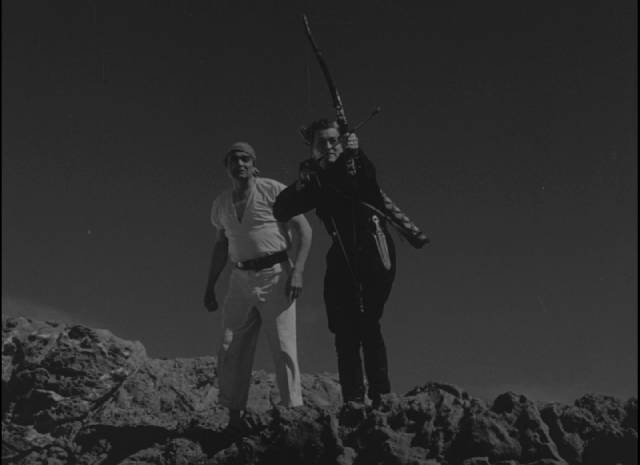
A Game of Death (Robert Wise, 1945)
Richard Connell’s 1924 short story “The Most Dangerous Game” has been adapted numerous times (IMDb lists almost a dozen shorts, features, TV shows and a current Quibi series), but the first version, Irving Pichel and Ernest B. Schoedsack’s 1932 feature The Most Dangerous Game, remains the best, and best-known. I don’t think I’d ever seen Robert Wise’s remake, A Game of Death (1945), before picking up the Kino Lorber Blu-ray … but if I had seen it, it’s easy to see why I would have forgotten it. Although Wise had already made three notable features for Val Lewton, this is a dull, lazy rehash of the 1932 film, devoid of atmosphere and simply going over the story again in the knowledge that the audience is already familiar with it so why bother trying to make it fresh and interesting? At least Roy Boulting’s 1956 version, Run for the Sun, updated it with Nazis hiding out in South America and gave it a boost with a major cast (Richard Widmark, Trevor Howard, Jane Greer, Peter van Eyck); everything about Wise’s version, including the cast, is bland and unmemorable. (Commentary by Richard Harland Smith)
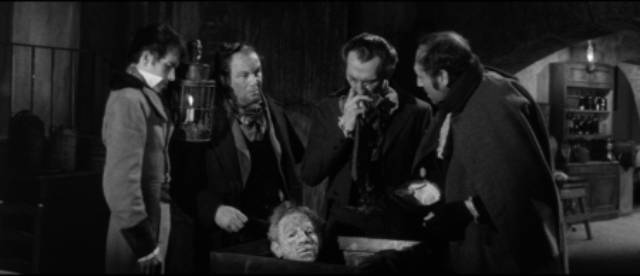
The Flesh and the Fiends (John Gilling, 1960)
Before he became a fixture at Hammer Films in the 1960s, John Gilling had been a prolific writer-director of atmospheric English B-movies. What brought him to Hammer’s attention was The Flesh and the Fiends (1960), the best of the many screen versions of the story of Edinburgh surgeon Dr. Knox (Peter Cushing) and the unsavoury grave robbers-turned-murderers Burke (George Rose) and Hare (Donald Pleasence). Producers Robert S. Baker and Monty Berman were the most successful emulators of Hammer’s Gothic style on a low budget (at least until Amicus gained a foothold a few years later) and Gilling’s film is steeped in period atmosphere and unsavoury violence. The script and cast are much better than they needed to be for a quick piece of exploitation. The KL disk includes the full-length export version (not the original UK cut as stated on the packaging; it has the nude version of scenes shot for the European market) as well as the severely cut US version which was shorn of twenty-one minutes. (Commentary by Tim Lucas)
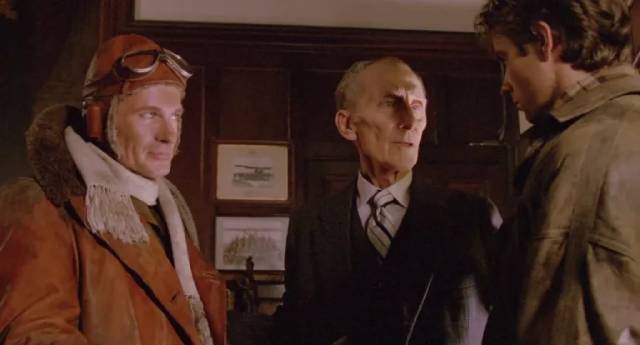
in John Hough’s Biggles: Adventures in Time (1986)
Biggles: Adventures in Time (John Hough, 1986)
John Hough had a three-decade career directing movies and television, making thrillers, horror movies, kids’ fantasies. While there are a number of favourites among his output, he never quite emerges as a distinctive personality – he could go from Hammer’s Twins of Evil (1971) to The Legend of Hell House (1973) to Dirty Mary Crazy Larry (1974) to Walt Disney’s Escape to Witch Mountain (1975) to the sordid horror of Incubus (1982) with ease and no sense of contradiction. I haven’t seen all of his movies, so I shouldn’t have been surprised by Biggles (1986), an adaptation of the long-running series of kids’ adventure stories by Capt. W.E. Johns, himself a pilot in the First World War. Obviously aimed at the same audience as Indiana Jones, the movie plays fast and loose with the source, adding a time travel element – present-day New York businessman Jim Ferguson (Alex Hyde-White) finds himself somehow linked with World War One flying ace James “Biggles” Bigglesworth (Neil Dickson), bouncing back and forth between the present and the Western Front towards the end of the war, as the Germans prepare to deploy a powerful new weapon which will turn the tide in their favour. Hough handles the time shifts, the fish-out-of-water comedy, and the action sequences deftly, drawing on the tongue-in-cheek tone familiar from his early work on The Avengers in the late ’60s. And yet it’s hard to see how this might have been expected to attract an international audience; by the mid-’80s, was there still a young audience familiar with Biggles? Despite the addition of an American protagonist, the tone is drily English. Still, as someone for whom Biggles was a part of my childhood, I enjoyed it. (Interviews with stars Neil Dickson and Alex Hyde-White)
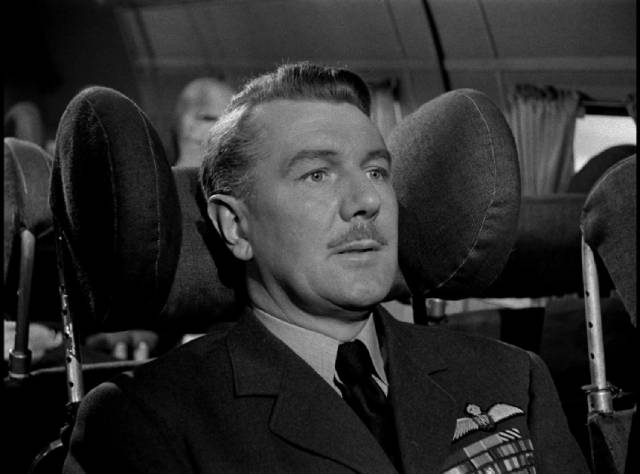
in Leslie Norman’s The Night My Number Came Up (1955)
The Night My Number Came Up (Leslie Norman, 1955)
Although I’ve long been a fan of Ealing Studios’ non-comedy movies, I’d never come across The Night My Number Came Up (1955) before this KL release. A mix of disaster movie and metaphysical mystery, it belongs in that strand of Ealing releases which includes Dead of Night (1946), The Halfway House and They Came to a City (both 1945), and Train of Events (1949). Director Leslie Norman made a number of features during the 1950s, this being the first, before embarking on a long television career, and he does a fine job with an odd story about predestination scripted by R.C. Sherriff based on a supposedly real incident in the life of Air Marshal Sir Victor Goddard. At a party the evening before a routine flight from Hong Kong to Japan, a British officer recounts a dream he had about being in a plane crash; the next day, events begin to conform to the dream – the scheduled plane develops mechanical problems and the substitute is the plane from the dream; there are personnel changes, passengers added, and suddenly the occupants of the plane match those in the dream… Those who know about the dream begin to feel trapped by a fate they seem powerless to avoid. With an excellent cast (Michael Redgrave, Michael Hordern, Alexander Knox, Denholm Elliott, Nigel Stock and many familiar supporting players) and Norman’s skilful direction, the film becomes a tense examination of a small group of people who know they’re heading for disaster and feel powerless to avert it because they come to believe it’s preordained. (Commentary by Samm Deighan)
In addition to these four movies, I have a backlog of two dozen KL disks in my to-watch pile.
*
Severin
Severin Films has a knack for appealing to my taste for obscure exploitation movies from various periods and countries and I frequently get sucked into buying their monthly bundles of new releases. I have a bundle on pre-order right now, plus half a dozen disks waiting on the pile.
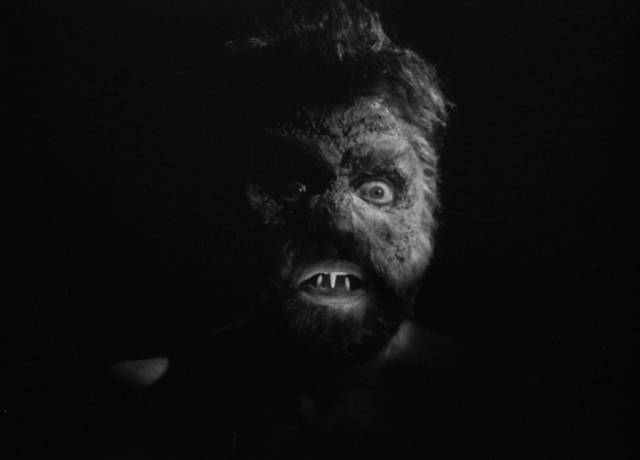
Horrors of Spider Island (Fritz Böttger, 1960)
German writer and actor Fritz Böttger isn’t exactly a name to reckon with and this oddity was the last of only three movies he directed. Horrors of Spider Island (1960), originally titled a little less blatantly in German Ein Toter hing im Netz (literally A Corpse Hangs in the Web), is a clumsy mix of cheesecake and horror in which a plane carrying a group of bickering models and their manager crashes on a remote Pacific island where the women quickly discover a corpse hanging in a giant spider web. Turns out there are large mutant arachnids lurking in the trees and when one of them bites the manager he turns into a human-spider hybrid who starts picking off the models. There’s a lot of time spent on catfights, bikini-wearing for swims in tide pools, and sexist banter from a couple of tough guys who arrive looking for the dead professor who was found in the big web. There’s an awful lot of teasing and padding, but the bugs are amusingly designed and the mutated manager looks like a creature from a Filipino B-movie. Severin’s disk includes the full German cut (84m) and the alternate U.S. It’s Hot in Paradise version (77m), with an video essay from Prof. Marcus Stiglegger (15:02) who squeezes in information about Böttger, the actors, and the context of German genre filmmaking.
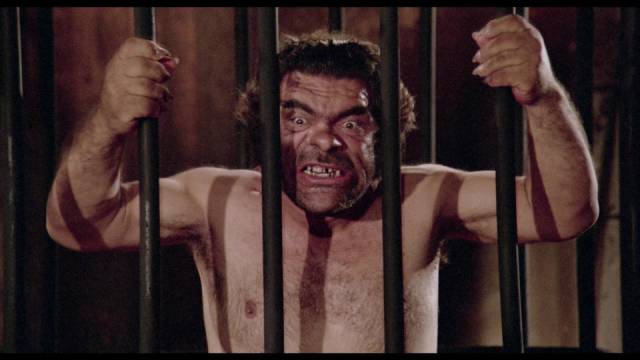
The Beast in Heat (Ivan Katansky, 1977)
One of the most disreputable genres to flourish in the ’60s and ’70s, Nazisploitation used the horrors of the Third Reich for displays of perversion and sadism which could hardly have offered much in the way of gratification for audiences in search of porn. Even more oddly, the genre produced several mainstream films by major Italian directors who used it as a way of probing the psychopathology of Fascism – Pier Paolo Pasolini in Salo (1975), Liliana Cavani in The Night Porter (1974) and Lina Wertmüller in Seven Beauties (1975). Needless to say, The Beast in Heat (1977) by writer-director Luigi Batzella (working as Ivan Katansky) doesn’t aspire to that level of seriousness. Cobbled together from several sources, including a dull World War Two movie by Batzella called When the Bell Tolls (1970) and another movie called The Devil’s Garden, the standard partisans vs Germans action is intermittently interrupted by an outrageous and completely unconnected storyline about an SS doctor (Macha Magall) doing grotesque experiments which in some way are supposed to be connected to the quest to create a Master Race; they involve a brutal caged dwarf who is expected to mate with a series of women prisoners, but instead violently assaults and kills them. It’s all random and completely nonsensical. The main attraction of Severin’s Blu-ray is the inclusion of a feature-length documentary about the genre by Naomi Holwill and Callum Waddell, Fascism on a Thread: The Strange Story of Nazisploitation Cinema (2019), and an interview with Stephen Thrower, which together give a fairly extensive survey of the genre, although neither quite gets at the unpleasant appeal beyond a desire to be shocked and offended. I certainly don’t have any answers, even though I’ve watched Salo a number of times and been left uncomfortable and depressed by each viewing while recognizing that Pasolini is getting at something important; The Beast in Heat is both unpleasant and boring with absolutely none of the problematic intellectual heft of Pasolini, Wertmüller or Cavani to justify the unsavoury exploitational material.
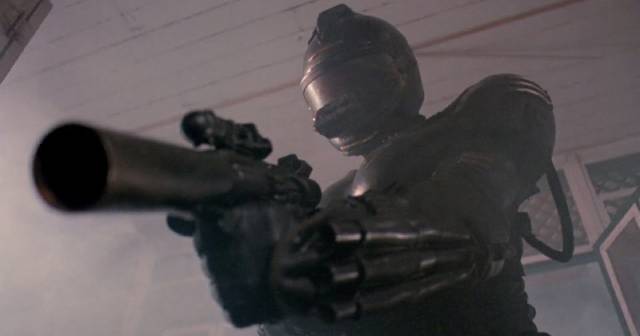
Robowar (Vincent Dawn [Bruno Mattei & Claudio Fragasso], 1988)
It’s a relief to turn to something as straightforward as Robowar (1988), another Italian genre mash-up credited to “Vincent Dawn”, though it was actually cobbled together by Bruno Mattei and Claudio Fragasso. Combining bits and pieces from The Terminator, Predator and RoboCop, and shot in the Philippines, it has a group of mercenary commandos sent to an island on a supposed rescue mission – but they’re not given all the intel they need for the job, kept in the dark by a civilian they’ve been forced to take along. This guy works for a corporation which has developed the “ultimate weapon”, a cyborg armed with heavy weapons and powered by the brain of a dead soldier who was once a friend of the commandos’ leader. There’s a lot of bickering and running around in the jungle, but the robo-menace is disappointingly ineffectual – it somehow managed to wipe out everyone running the project on the island, but mostly seems unable to shoot any of the commandos. (Packed with interview featurettes, with a separate CD of the pulsing, repetitive synth score)
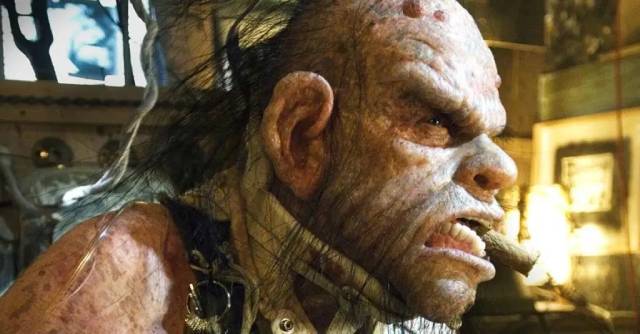
Saint Bernard (Gabe Bartalos, 2013)
I’m really not sure what to make of Saint Bernard (2013), the second feature written and directed by special effects creator Gabe Bartalos. It has something to do with a conductor named Bernard (Jason Dugre) who seems to be overwhelmed with performance anxiety and sliding inexorably into madness. At least, that’s my guess as the film presents a stream of increasingly bizarre scenes which provide Bartalos with opportunities to design and execute visually imaginative set-pieces – beginning with skydiving chicken carcasses and then introducing increasingly bizarre characters in surreal settings. It’s definitely eye candy and individual moments vary from unsettling to amusing… but at ninety-nine minutes, it wears thin and becomes kind of exhausting. (Brief making-of)
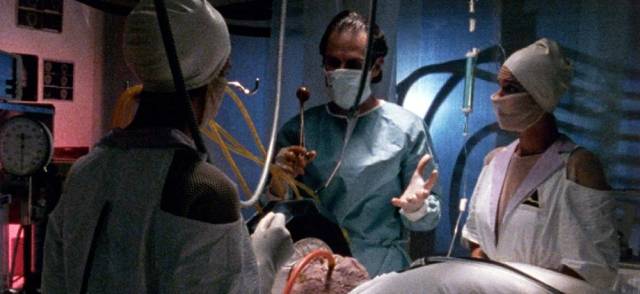
Death Warmed Up (David Blyth, 1984)
Three years before Peter Jackson launched his career with Bad Taste (1987), another New Zealand filmmaker tackled gross-out splatter. Death Warmed Up (1984) was David Blyth’s third feature, coming after a couple of years of television work, and had a rocky distribution history with different cuts in different markets and the original negative lost long ago, so the version now available is pieced together from various different sources. Lacking Jackson’s outrageous humour, Death Warmed Up plays as a more serious teen-oriented horror movie akin to Michael Laughlin’s New Zealand-shot Strange Behaviour (1981). After seven years in an asylum for murdering his parents, Michael Tucker (Michael Hurst a decade before his tenure as Iolaus in Hercules: The Legendary Journeys) goes in search of his father’s fellow scientist Dr. Archer Howell (Gary Day) who used brain control techniques to turn Michael into a killer. The doc is continuing his nefarious experiments on a remote island, where he’s protected by his mind-controlled mutant subjects. Decent performances, atmospheric photography (reminiscent at times of Mario Bava’s use of exaggerated colours) and some graphic gore make it an effective horror movie very much rooted in its time. (Commentary, interviews, deleted scenes, and a 4:3 lo-res version of the full-length cut from an old VHS release, which runs four minutes longer than the restored version)
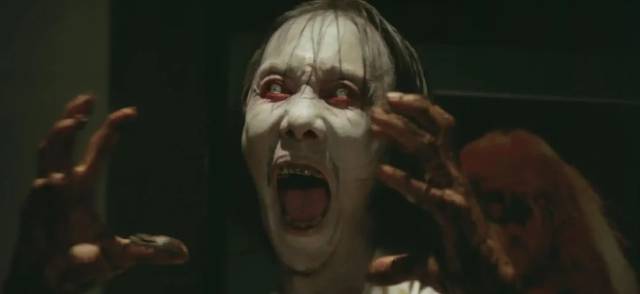
Satan’s Slave (Sisworo Gautama Putra, 1980)
My exposure to Indonesian genre cinema is fairly limited – off the top of my head, the only two movies I can think of are H. Tjut Djalil’s Mystics in Bali (1981) and Lady Terminator (1989) – and it’s too easy to attribute their seeming wackiness to seeing familiar genre elements filtered through unfamiliar cultural tropes. The sheer strangeness of Djalil’s movies makes them appealing; Mystics is the only instance I know of in which the Indonesian vampire tradition is depicted – a floating head from which entrails dangle, which reattaches to its body at dawn – not to mention the one-of-a-kind scene in which the floating head sucks a fetus from a pregnant woman. Sisworo Gautama Putra’s Satan’s Slave (1980) is more retrained than that, though it does feature ghosts and zombies in its story of a middle-class family whose wife and mother recently died. Mum reappears as a ghost who may or may not be malevolent; meanwhile a mysterious woman shows up at the door and announces that she’s the new housekeeper. The family let her move in and strange things begin to happen because, apparently, she’s a witch. In place of the Christian deus ex machina we’re used to in western horror movies, this one brings in Islamic religious tropes to defeat the evil plaguing the family. For a forty-year-old Indonesian exploitation movie, the source materials are in excellent shape and Severin’s Blu-ray looks gorgeous. (Several interview featurettes and two short films by Joko Anwar who directed a remake in 2017)
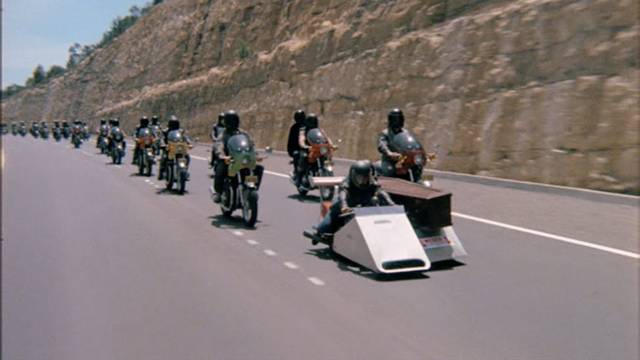
Stone (Sandy Harbutt, 1974)
I apparently lucked out with this one, a two-disk special edition DVD, because it went out of print on the Severin website pretty much the moment I hit the pay-now button. An important title in the history of Ozploitation, its influence can be seen in George Miller’s Mad Max, made just five years later – the bikes, the dangerous stunts, even the presence of Hugh Keays-Byrne as Toad, a prominent member of the biker gang … he’d show up again as Toecutter in Mad Max and Immortan Joe in Fury Road (2015). Stone (1974), director Sandy Harbutt’s only feature, is uneven, its strong beginning promising something more than it delivers; at a political rally, a prominent environmentalist is giving a passionate speech when a gang of bikers known as the Grave Diggers show up to heckle. Toad, tripping on acid, finds himself the only witness when an assassin fires from a nearby rooftop. In a druggy panic, he urges the rest of the gang to get away in the ensuing confusion. Then someone starts knocking off gang members in spectacular ways… A guy named Stone (Ken Shorter) shows up at their hangout bar, gets into a fight, then manages to prevent another murder (by crossbow!). He immediately identifies himself as a cop who wants to join the gang in order to find out who’s targeting them. The fast-paced mayhem gets deflected as the movie switches to depicting the bikers’ self-created little society, rejects and outsiders who have forged an alternate place to belong. Stone has to prove himself to them and does eventually bring down the killer … but he can never belong. And so it ends on a bleak note. This project obviously meant a lot to Harbutt, who co-wrote, produced, directed, production designed, co-starred (as gang leader Undertaker), and even wrote a song for the soundtrack. The outlaw tone and dangerous stunt work established a standard which Aussie exploitation filmmakers drew on for inspiration over the next decade. (Second disk with 25th anniversary documentary and a vintage 30-minute making-of)
*
Vinegar Syndrome
I’ve accumulated quite a pile of Vinegar Syndrome disks thanks to a recent sale on the Unobstructed View website (a godsend for Canadians who no longer have to order a lot of releases from the States or England – they carry Severin, Synapse, Arrow, Criterion, Shout! Factory, Blue Underground, Kino Lorber, and a bunch of smaller niche labels). Vinegar Syndrome’s catalogue still leans towards seedier exploitation titles, but it’s salted with a number of obscure and offbeat independent and underground movies. I’ve picked up a few of the latter, but so far have only dipped into the trashier side of the pile.
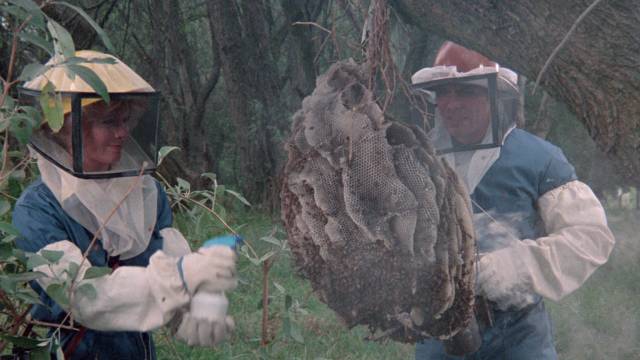
The Bees (Alfredo Zacarias, 1978)
I don’t know anything about Mexican filmmaker Alfredo Zacarias other than that he came from a very prolific filmmaking family – his father Miguel has fifty writing, fifty-four directing and sixty-nine producing credits on IMDb, while his cousin Rene Cardona Jr has sixty-five writing, twenty-nine producing and ninety-nine directing credits. In comparison, Alfredo’s twenty-six directing credits seem rather paltry, though he does have a fairly respectable fifty-one writing and forty-one producing credits. The Bees (1978) was apparently a bid to gain an international audience, cashing in on the late ’70s obsession with killer bees which were supposedly swarming up from South and Central America – there was Curtis Harrington’s Killer Bees (1974), Bruce Geller’s The Savage Bees (1976), Lee H. Katzin’s Terror Out of the Sky (1978), all made for television, and then the all-star, big-budget Irwin Allen epic The Swarm (1978)[1]. Timing makes it look as if Zacarias’ movie was a quick cash-in on Allen’s, but Zacarias claims that Warners gave him cash to delay the release of The Bees to avoid conflict with what they hoped would be their blockbuster (it wasn’t). The Bees has a great B-movie cast – John Saxon as a corporate villain, Angel Tompkins as a scientist, John Carradine as her “German” uncle Ziggy – and a whole lot of people swatting wildly at superimposed bees. There’s a spectacular(?) climax as Angel and a reformed Saxon attempt to convince a skeptical U.N. committee of the imminent danger, their seemingly unsuccessful argument abruptly reinforced as the committee room is inundated with bees. The Bees may well be the best of all killer bee movies – ridiculous, unselfconscious exploitation loaded with silly dialogue and stock footage which even includes Gerald Ford at the Pasadena Rose Bowl parade. (Brief interview with director Zacarias)
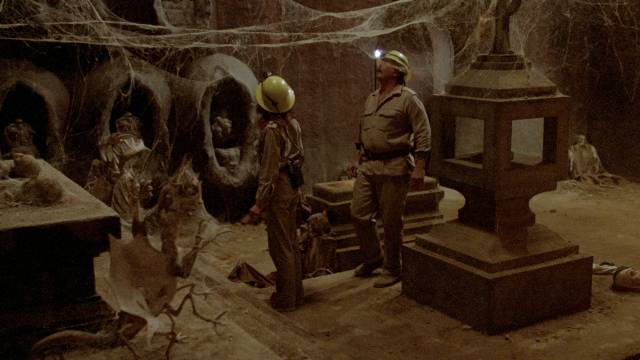
Demonoid/Macabra (Alfredo Zacarias, 1981)
The Bees may not have lit up the international box office, but that didn’t stop Zacarias from making another attempt to break out three years later with a supernatural horror tale starring Samantha Eggar a few years into her exploitation phase, following David Cronenberg’s The Brood (1979) and James Glickenhaus’ The Exterminator (1980), supported by Stuart Whitman, already thirty years into a fifty year career. With horror turning towards the slasher film in the wake of Halloween, Demonoid (1981) seems a tad old-fashioned, but it’s made with enthusiasm and vigour. Eggar is Jennifer Baines, wife of an American mining engineer deep in debt as he attempts to revive a defunct Mexican silver mine. When she comes to visit, she insists on going into the mine despite the locals warning that this is bad luck. She immediately causes a rock slide, revealing a mummified corpse missing its left hand. The miners refuse to go back in, so she attempts to shame them by going deeper herself, eventually discovering an underground chamber once used by a cult of demon worshippers. Needless to say, she and her husband unleash a demonic force which takes possession of people’s left hands, causing a chain reaction of death and destruction. Jennifer teams up with world-weary priest Father Cunningham (Whitman laying on the brogue rather thickly) to defeat the ancient evil – though this being the ’80s you can guess how well the battle goes.
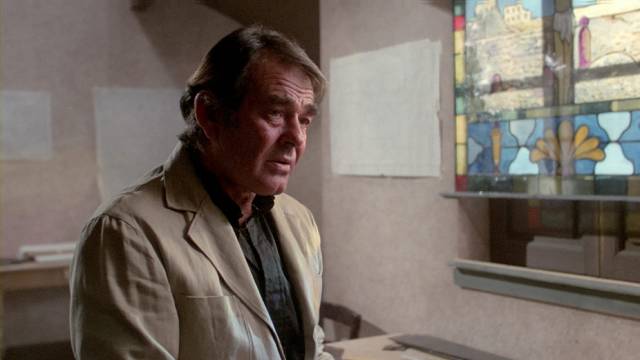
The interesting thing here is that there are two distinctly different versions of the movie, both included in decent transfers on the disk. Demonoid is a shorter cut prepared for the US market, while Macabra was made for international sales. But the eleven-minute difference is not just a matter of trims. The movies are edited differently and have quite different tones; Demonoid begins with a prologue in which cult members hundreds of years earlier try to contain the evil by cutting off a woman’s hand in the underground temple – a sequence missing from the longer Macabra. The US version has a campy tone, enhanced by recycled AIP library tracks, and largely due to the excision of narrative connective tissue and character details. This gives it a faster pace but makes it less coherent, while Macabra is a more straightforward piece of demonic horror with an original score by Richard Gillis which adds some gravitas. Demonoid is cheesy fun, while Macabra is a decent traditional supernatural horror movie. (Brief interview with Zacarias)
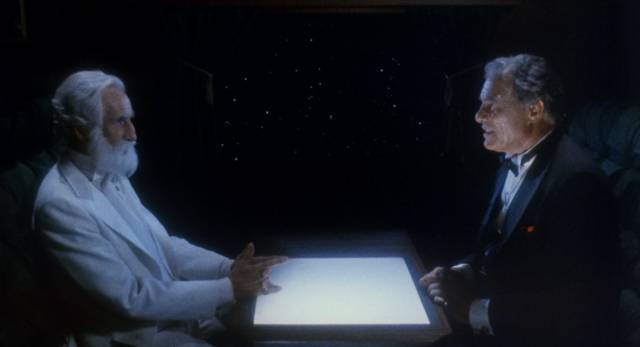
Night Train to Terror (Various, 1985)
Night Train to Terror (1985) inspires a WTF response which is only partly alleviated when you discover that it was cobbled together from three other features and sutured with a new framing device in which God (Ferdy Mayne) and the Devil (Tony Giorgio) vie for possession of the souls of passengers travelling on a train to Hell (or something). Just one of the disconcerting details about the production is that it’s credited to writer Philip Yordan, who somehow got here after a long and distinguished career marked by numerous classics. The directing credit goes to Jay Schlossberg-Cohen, who did the frame and put it all together, while the cannibalized features were the work of John Carr, Phillip Marshak, Tom McGowan and Gregg G. Tallas. Another surprise is finding familiar faces in the cast: in addition to Ferdy Mayne, we get to see John Phillip Law, Cameron Mitchell, Richard Moll and Marc Lawrence. And let’s not forget that every time we return to the frame, we see and hear a “New Wave” band playing a song over and over again while break-dancing.
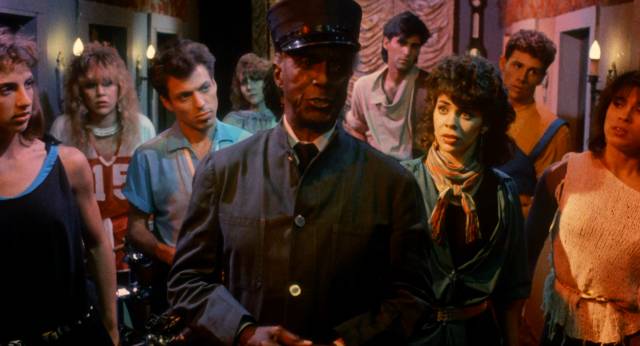
As bizarre as the context is, the three stories watched by God and the Devil through a train window are made completely baffling as they’re actually features chopped down to twenty or thirty minutes. With no time to establish plot or character, they make no sense, taking on a weirdly hallucinatory quality. In the first, Harry Billings (Law) drives dangerously and kills his wife, waking to find himself in a clinic where orderly Otto (Moll) dismembers living victims to sell their body parts. In the second story, med student Glenn (Rick Barnes) becomes obsessed with pornstar Gretta (Merideth Haze), who moonlights as piano player in a jazz band; trying to get rid of Glenn, club owner George (J. Martin Sellers) lures him into a group who play deadly games involving electrocution and a giant poisonous bug. And who knows what’s going on in the third story, which has a police detective (Mitchell) drawing a surgeon and her husband into some scheme involving an apparently immortal Nazi and Satan himself, who spend their time hanging out at a disco.
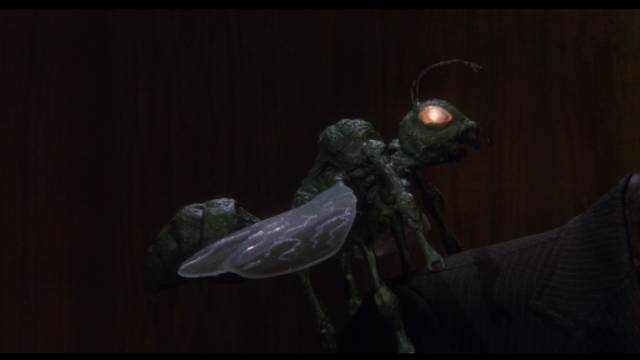
Nothing adds up, but we do get some sense of what went into this disjointed mess because Vinegar Syndrome has included a DVD copy of the full-length feature which supplied the middle story. Gretta, aka The Dark Side of Love (1984), directed by John Carr and written by Yordan (credited as an adaptation of a 1955 novel by Erskine Caldwell) expands in interesting ways on what we see in Night Train to Terror. Medical student Glenn again falls for pornstar/jazz pianist Gretta, and he again gets drawn into the decadent “suicide club”, but after he tries to sever contact, he hears that Gretta has died and finds her replaced at the club by Charlie White, a cocky young guy who flaunts his womanizing. Glenn recognizes Charlie as Gretta in drag, this alternate personality being the result of some shock … and he sets out to shock Gretta back into existence. Although this ups the weirdness quotient, some of the more extreme elements of Night Train are toned down – there’s a different version of the killer bug, smaller and less grotesque, and the sequence in which it escapes out the window and attacks a couple necking in a park, stinging the guy and causing him to swell up and explode, splattering the girl with gore, is completely absent. The shortened version aims more directly at horror, while the feature goes for a psychologically twisted character study.
What all this leaves me wondering is why anyone made the effort and went to so much trouble to transform what were apparently unmarketable movies into yet another unmarketable movie… It’s a pity Vinegar Syndrome couldn’t include the other two source movies, Cataclysm (1980) and Scream Your Head Off, aka Marilyn Alive and Behind Bars (completed and released in 1992) for the full bizarro experience (the latter seems really hard to find, but I have tracked down a copy of Cataclysm on-line[2]). (Commentaries by Schlossberg-Cohen and The Hysteria Continues, interview with editor Wayne Schmidt)
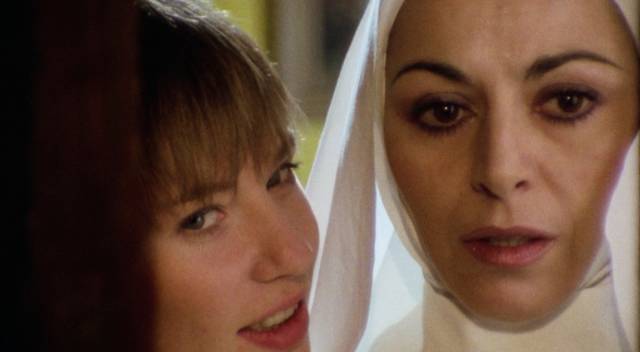
in Andrea Bianchi’s Malabimba (1979)
Malabimba (Andrea Bianchi, 1979)
Although not as disorienting as Night Train to Terror, I did feel a weird sense of deja vu while watching Andrea Bianchi’s Malabimba (1979) because it shares numerous elements with Mario Bianchi’s Satan’s Baby Doll (1982), which I recently saw. There’s the decadent bourgeois family; the mother dies during a seance; the teenage daughter becomes possessed and channels depraved sexuality; the father is busy seducing women; his brother is an invalid; a nun is tasked with sorting the daughter out and ends up sexually entangled with her. The biggest difference is that Malabimba lacks the more overt black magic element of Satan’s Baby Doll and adds a few glimpses of hardcore obviously inserted after the fact to boost exploitation value. (Interviews with actress Mariangela Giordano and cinematographer Franco Villa, plus a group commentary by heavy-hitters Samm Deighan, Kat Ellinger and Heather Drain)
_________________________________________________________
(1.) I just watched The Swarm for the first time in decades (I don’t think I saw it again after its theatrical run) and it’s as bloated and dull as I remember, with a huge cast of stars either acting “very serious” and yelling at each other, or playing little personal stories for sentimental comedy. But production values are solid and the bees themselves are well handled (actors are genuinely in amongst them rather than swatting at an optically superimposed menace). Jerry Goldsmith’s score is as overblown as Michael Caine’s performance – he’s so intense that you’re certain right to the end that he has something to hide, but no, he’s just overacting. (return)
(2.) Additional length doesn’t help much here as watching all ninety-three minutes of Cataclysm doesn’t seem to add much to what you get in Night Train, other than clarifying that the immortal Nazi is Lucifer doing bad things because he wants to be done with the human race and get back to Heaven … or something. (return)
Comments
I just watched The Flesh and the Fiends the Sunday last. I liked it a fair bit. I hadn’t seen it before. I watched a copy from YouTube and thought it looked fairly good.
A good number of videos on YouTube are coming up at 720p and even 1080p. You can’t watch the 1080p version unless you have the HD version of YouTube, I don’t, it’s fairly pricey. The YouTube downloader I use for Firefox has an option, with a small donation, that gathers the 1080p versions and downloads them for you. Works quite well, hard on the hard drive though.
After seeing the DVD contains the short US version and the naughtier Euro cut I decided to order a copy. The version on YouTube I watched came in at 93:34 and didn’t have any nudity. The film starts with the title card from the British board of censors.
Yeah, there’s a lot of stuff on YouTube now, including some fairly obscure movies, but I refuse to give Google money to watch anything. After all, they’re constantly stealing information about me that they make a profit from, so I figure they owe me!
I took a quick look at the copy of Flesh and the Fiends on YouTube and you’re right, it’s the UK version with the “clothed” pub scenes. I held onto my old Image Entertainment DVD because it includes that cut along with the racier “continental” version, so now I have all three cuts.